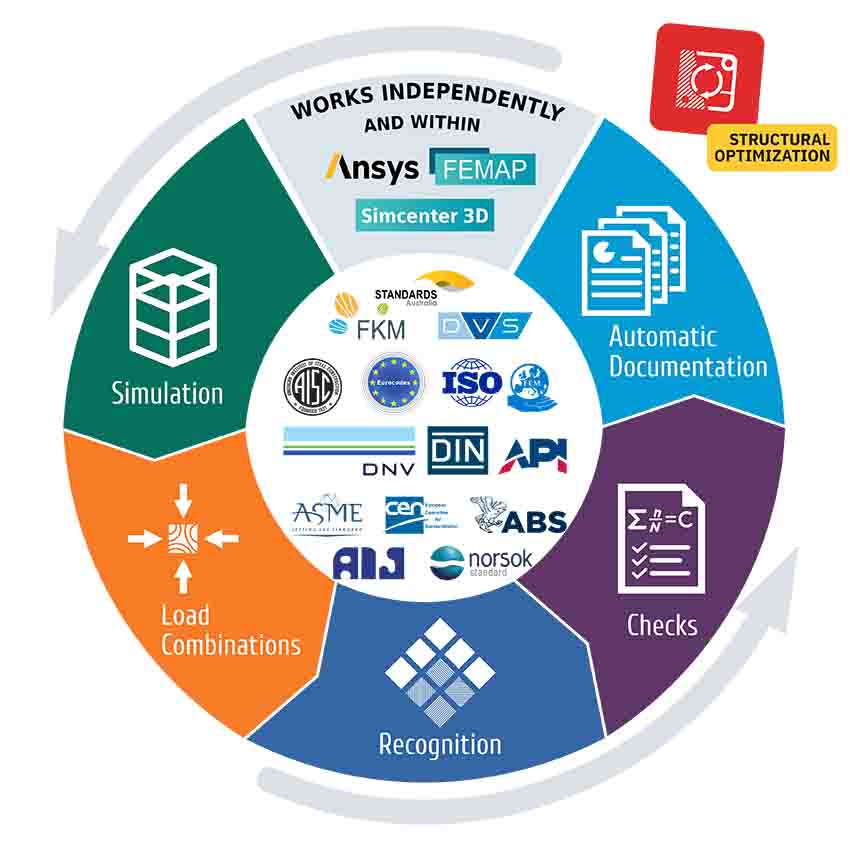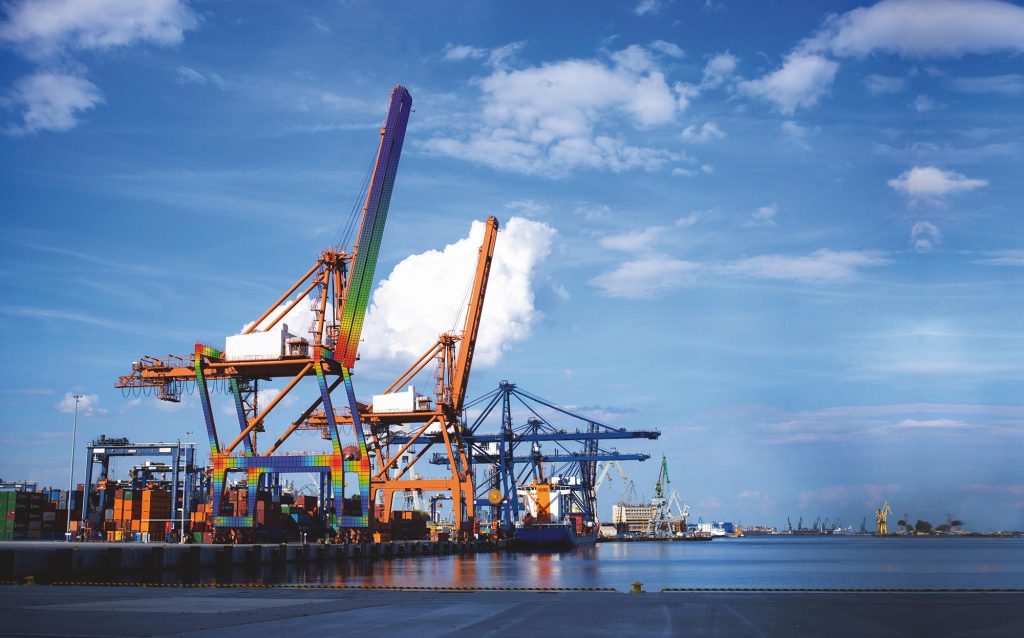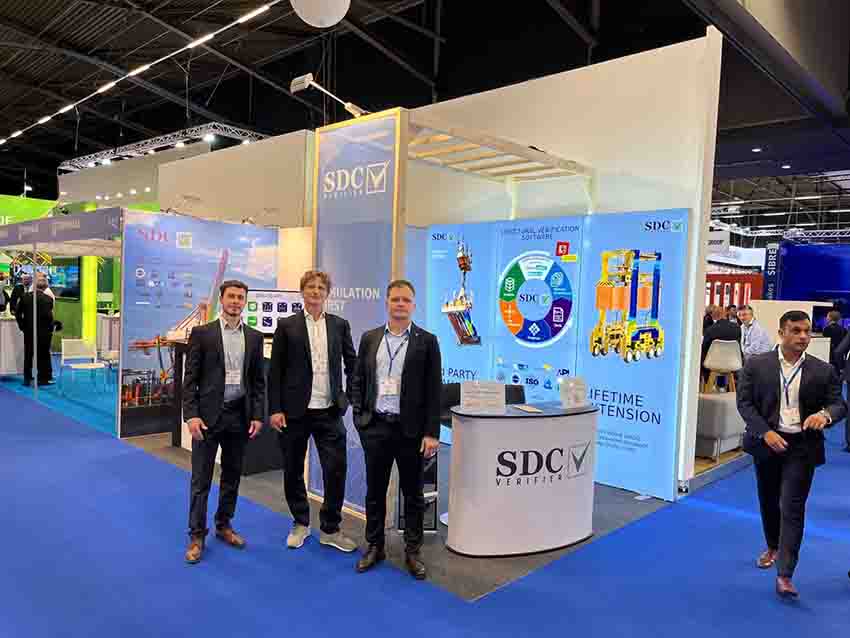SDC Verifier is an engineering company on the mechanical and structural design that provides engineering consultancy services and tailor-made code-checking software. Started in 1998 by the current owner and CEO – Wouter van den Bos, a lecturer at the Technical University of Delft, it comprises 25 employees in three offices, with headquarters in the Netherlands and R&D offices in Ukraine and Poland. There are hundreds of customers on all continents for consultancy services and our FEA verification software.
Interview with Oleg Ishchuk, COO at SDC Verifier.
Easy Engineering: What are the main areas of activity of the company?
Oleg Ishchuk: As already mentioned, we do both software and consultancy. As a consultancy, we have provided mechanical design verification according to industry rules since 1998. We mainly focus on the Port industry, Heavy Lifting, Offshore, Marine, Naval Architecture, Ship Design, and Energy industries. To optimize these consultancy services, we developed software that helps us to automate monotonous routines and focus on completing projects. So later, we figured out that other engineers worldwide could also benefit from these features, and we started developing software active in the market in 2010. It helps to verify the structures according to rules and regulations within the finite element analysis method. The most complex structures are checked for stresses or displacements or general FEA outputs and verified within the different failure modes like buckling, fatigue, and connection checks. Compliance with the requirements of the standards for certification procedure is ensured.
E.E: What’s the news about new products?
O.I: Since the beginning, we have started to work on top of FEA software. First, we started implementing SDC Verifier as an interface for Simcenter Femap, a Siemens product – a well-known and powerful FEA tool. Later on, we also included interfaces for Simcenter 3D and Ansys Mechanical. And now, we are happy to share that we are developing an independent interface that will keep all the capabilities of the existing software but also will allow building simple models with beams and shell elements and do the FEA analysis with the trusted and proven NASTRAN solver. This independent software will have all the functionality of SDC Verifier, and current integrations will not be anyhow discontinued. We will develop the software simultaneously.

Moreover, it will be much more scalable because it will be possible to start within the FEA, build a simple model in the independent interface, and then export to full Femap, Ansys, or Simcenter 3D if necessary. It will also be able to import different CAD interfaces, geometries, and FEA models. So, we aim to make modeling scalable, simple and start the project process with simulation. Simulation is critical in the design setup and verification, and we want to say that it is something to begin with – simulation first. We do the FEA, and later this model is used for the design process.
E.E: What are the ranges of products?
O.I: SDC Verifier is currently available as a plugin for Ansys, Siemcenter Femap, and Simcenter 3D, and starting with September 2023, we are going to have SDC Verifier as an independent interface. Usually, it comes as SDC Verifier Professional with all engineering standards and all functionality included for multiple industries available for both lease or perpetual model with a single computer, floating, or global license. For those who want more and not only verification but also design optimization, automation, and some top-notch features like hot-spot stresses analysis or rainflow counting, there is another level – SDC Verifier Enterprise, and it has full functionality with extra features of optimization and automation and makes sure that all the design engineers’ requirements are met. For entry-level or small companies or those focused on one specific topic, we have dedicated apps available for certain groups of checks, like only beam buckling or fatigue or plate buckling checks. The independent interface will also have a scalable model of beam elements only, beams and shells, and then upgrade to the full FEA solution available. It will also be possible to have a lease or perpetual license with the possibility to limit to specific checks. The range of the products, including free tools and the well-known Report Generator feature, is extensive, and everyone can find the required product to suit their particular needs.
E.E: At what stage is the market where you are currently active?
O.I: The industry is very well developed. Some solutions and methodologies appeared in the 70-ies or 80-ies, and the engineering software since that time has become very complicated. Currently, the market is going through a kind of renaissance stage where new tools with all the development of computational engineering, computational power, cloud solutions, and artificial intelligence are being born. And one of the most immense challenges for software companies now is presenting them to the engineers, who are used to old-fashioned tools or hand calculations or primitive approaches, which are proven but very time-consuming and manual. It is a challenge now to convince them to use modern tools that save an enormous amount of time, are much more effective, the room for error is much smaller, and it is much easier to use with modern functionalities.

E.E: What can you tell us about market trends?
O.I: As everywhere, market trends are coming and passing, and in the recent 30 years, we have seen multiple trends uprising like GPU and quantum computing, cloud computing which reduced the calculation time significantly but at the same time, it allowed us to build much more complicated models. Like with washing machine use, you don’t get much more spare time, the same is with comprehensive computers, engineers don’t get much more spare time, but their computational models have become much more extensive, analysis requires extra computational power now, yet the results are more precise and detailed. With the other current trends like artificial intelligence, I think that we still do not know how to use it properly and effectively. It is not like AI will immediately replace proven technologies like FEA, but FEA can be enhanced with AI. We need to consider modern technologies and make sure that it is well integrated into the products and all their strengths are used. But be mindful of the hype, and make sure that two plus two is still four.
E.E: What are the most innovative products marketed?
O.I: As an employee of SDC Verifier, I would say that our technologies are pretty innovative in terms of saving time and reducing routine for focusing on more exciting engineering problems. However, here are other tools that are alternatives to traditional FEA. Some tools use meshless calculation models or Reduced Body FEA methods, which are interesting. These technologies are quite innovative in terms of what they offer. Still, the approach of using proven NASA-developed solvers and computational methods like FEA with innovative technologies that help to automate routine work is, in my opinion, the key to success for an engineering design company or a structural engineer.

E.E: What estimations do you have for 2023?
O.I: It is tough to make predictions with all our challenges, but so far, we have been continuously growing, and with the launch of new products, with our great team, I am confident about the future of SDC Verifier. And for 2023, not even about 2023, but about the coming years, we are excited about new emerging technologies, with the development of computational power and intelligence. I am excited about what is ahead.

